My day started in the morning somewhere near
Pumpville, about 40 miles southeast of Sanderson, TX.
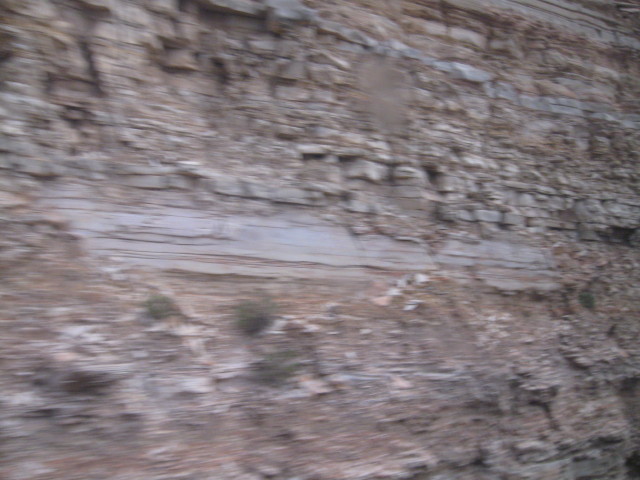
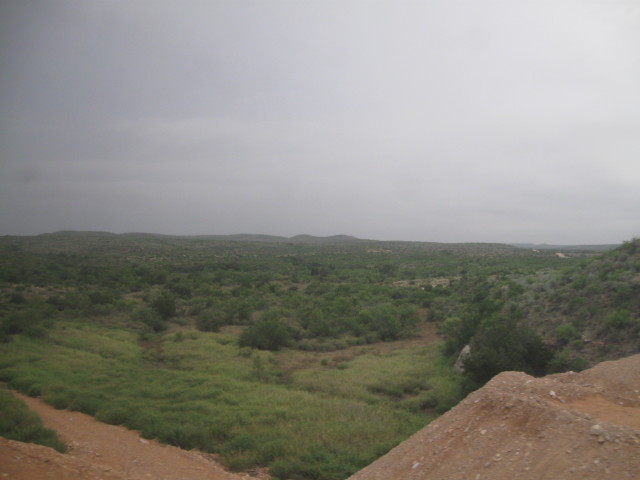
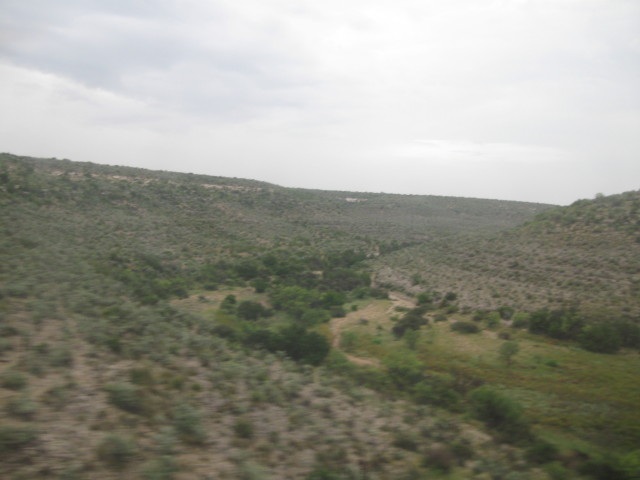
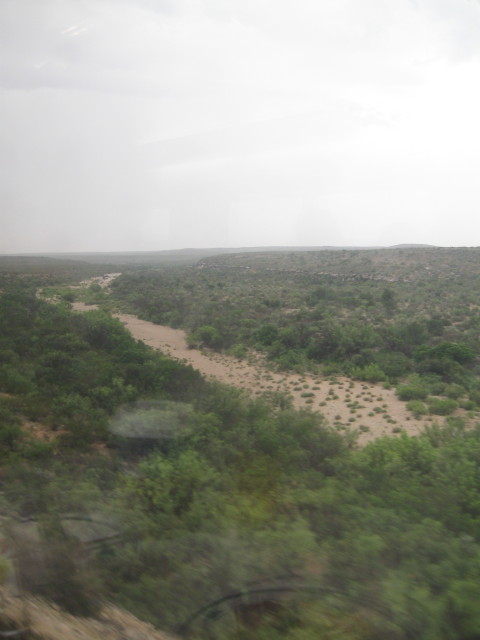
Sanderson is the cactus
capital of Texas, the eastern gateway to the Big Bend Wilderness
Area and the site of the "last" train robbery in 1912 at nearby
Baxter's Curve. The outlaws, thinking of everything, shod their
horses with their shoes on backwards to make it appear that
their escape was in the opposite direction! Foiled by a
quick-thinking express messenger, the perpetrators' novel plan
failed spectacularly. Today, the would-be robbers' graves are a
tourist attraction in town at the Santa Rita Cemetery.
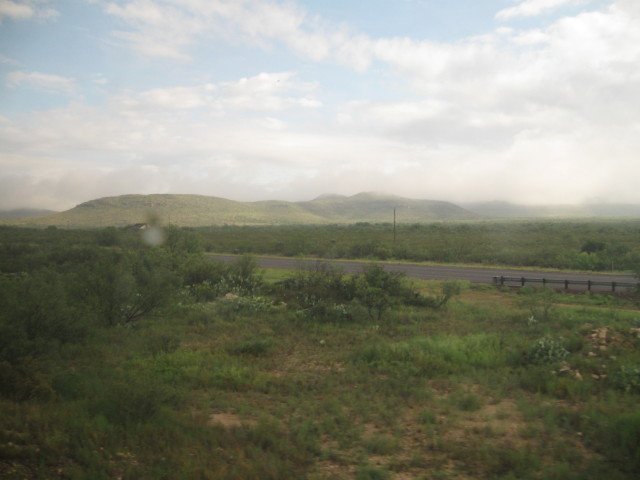
After Sanderson I went to
the diner car for breakfast of railroad french toast. One of my
seat mates was a gentleman who lives in Alpine and needs to
travel for business so he will take the train to a big city
airport, usually San Antonio or Houston. My other mates were a
mother and son from El Paso coming back from visiting relatives
in Louisiana bayou country. The gentleman left early as we were
approaching his stop in Alpine.
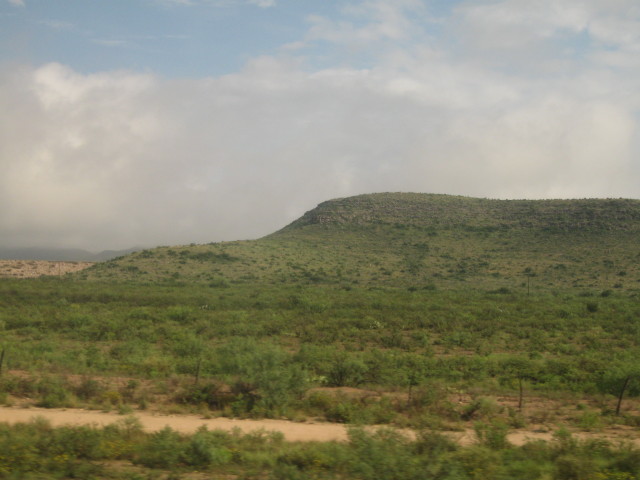
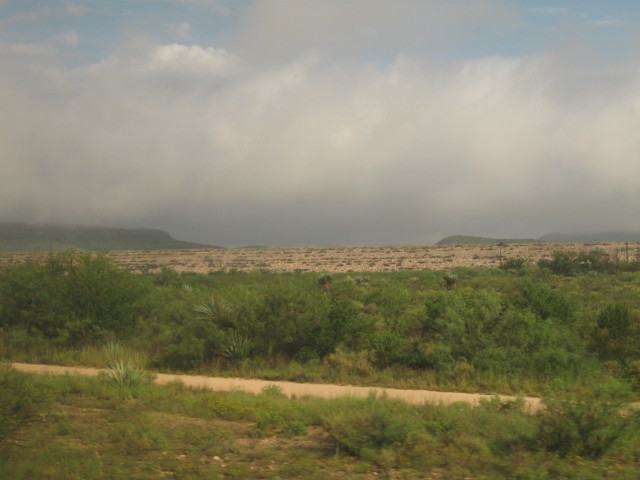
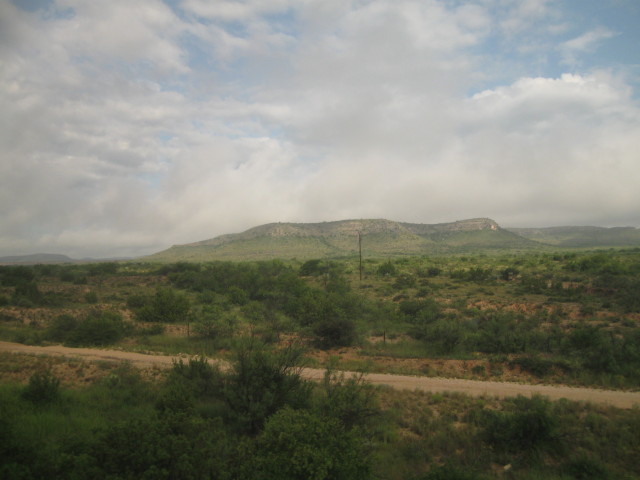
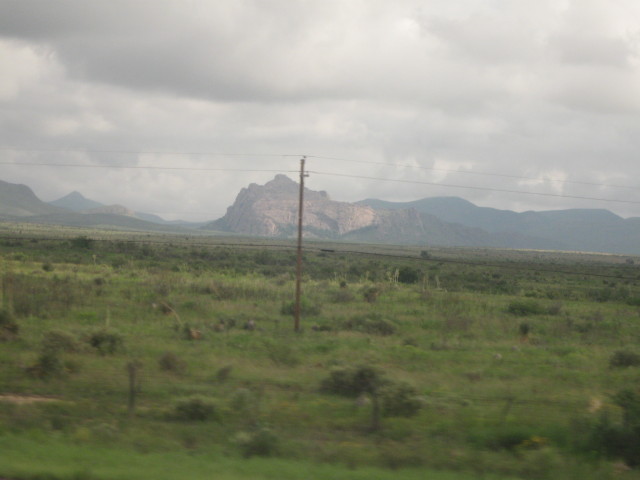
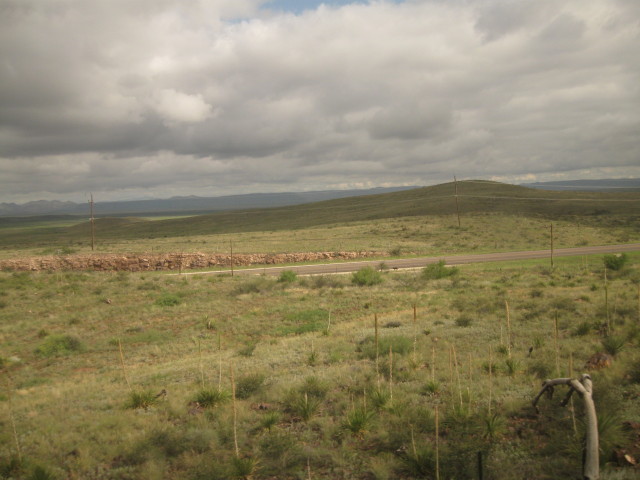
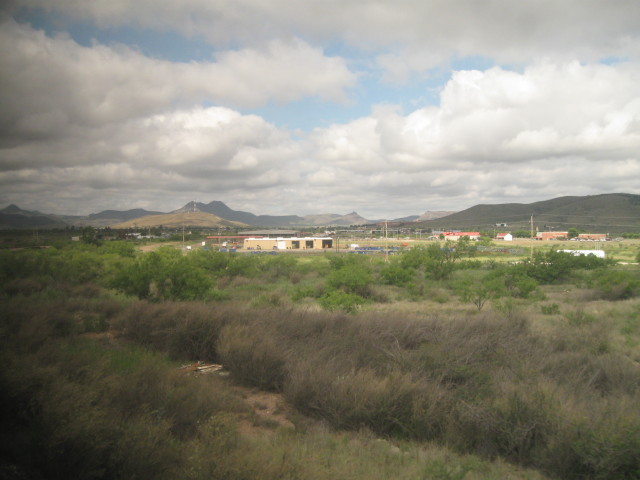
Alpine, TX
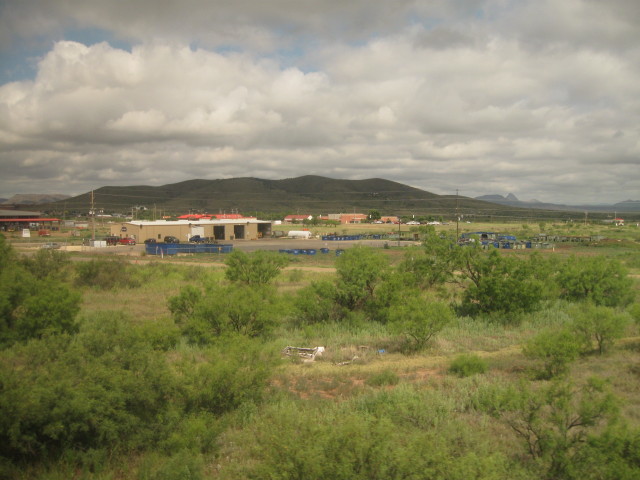
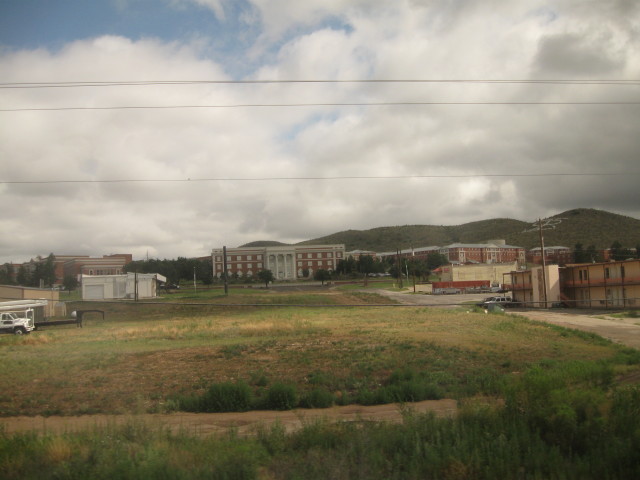
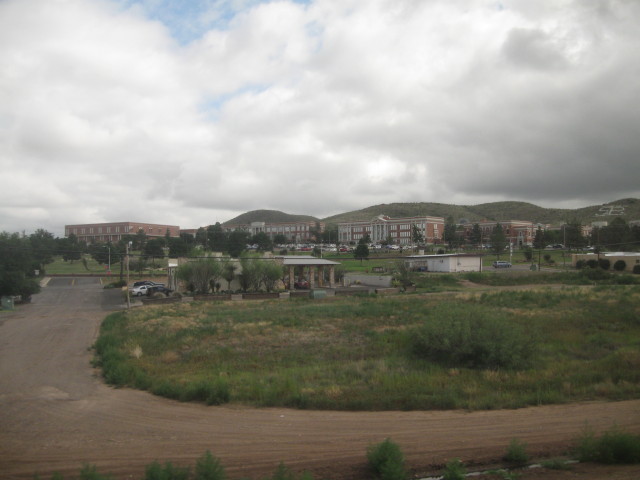
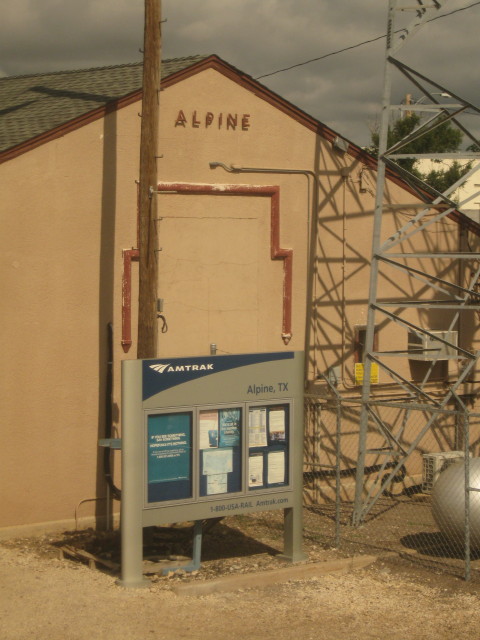
Alpine is the gateway to Big
Bend State Ranch Park, for Davis National Historical Site and
home to Sul Ross State University. It celebrates the Working
Ranch Rodeo and Chuck-wagon Cook-off each August and the Big
Bend Balloon Bash every September. Alpine came into existence in
1882 due to the arrival of the railroad and its abundant supply
of high quality water essential to the operation of steam
locomotives. In these parts, ranches often exceed 200,000 acres
in size. Prior to the admission of Alaska to the Union in 1959,
Alpine was the largest city in the largest county in the largest
state in the United States.
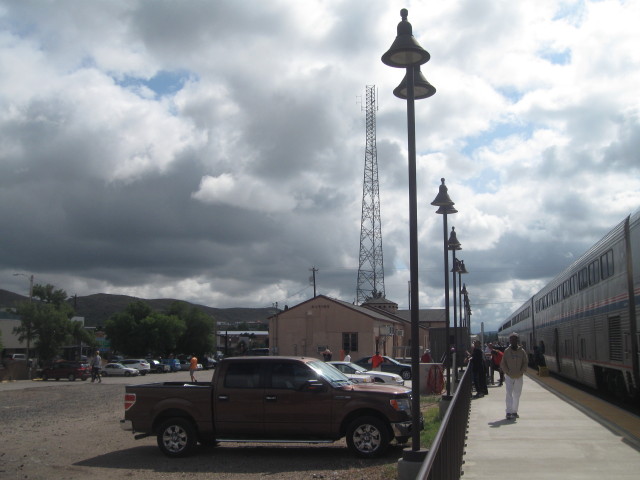
After breakfast I returned to my room, now made up for day use,
and watched the countryside speed by and waited for the call to
lunch.
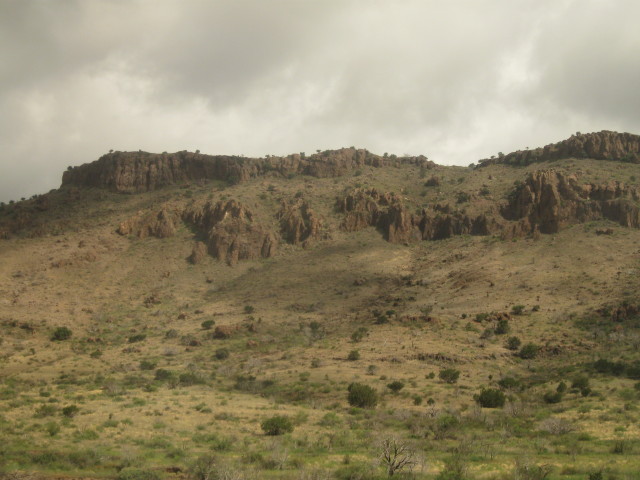
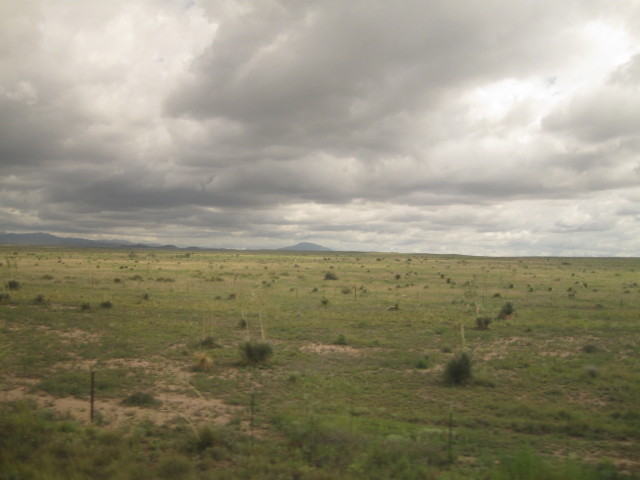
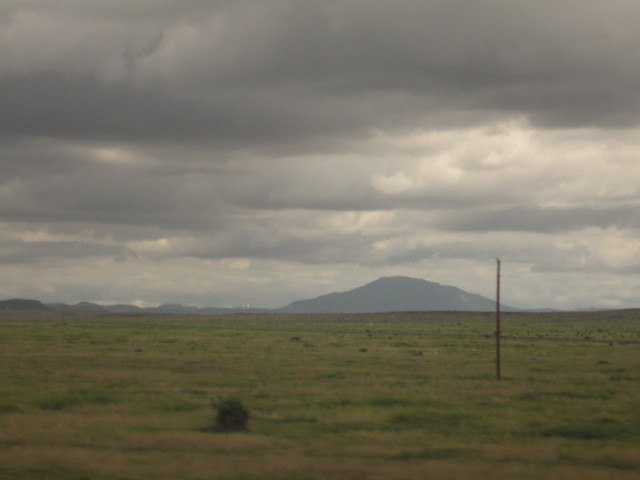
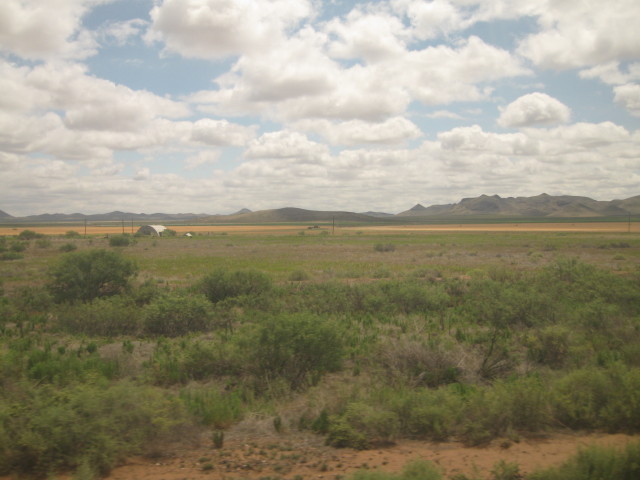
We were some 25 miles southeast of Sierra Blanca when we had a
time zone change from Central Time to Mountain Time.
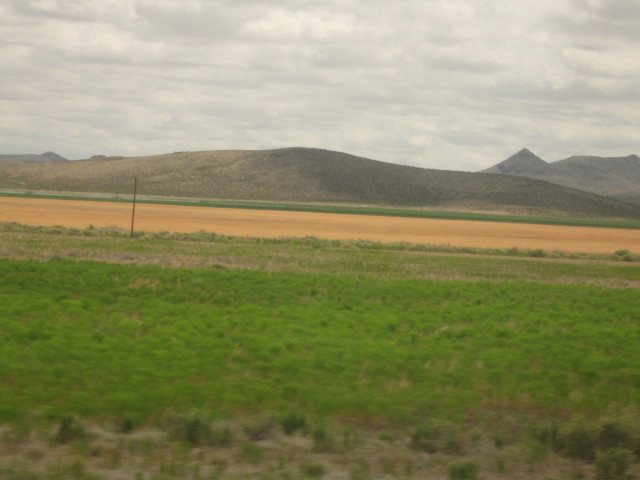
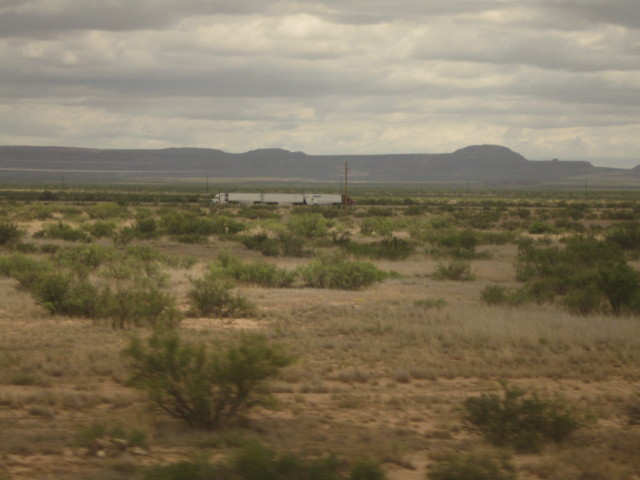
I-10 at Sierra Blanca.
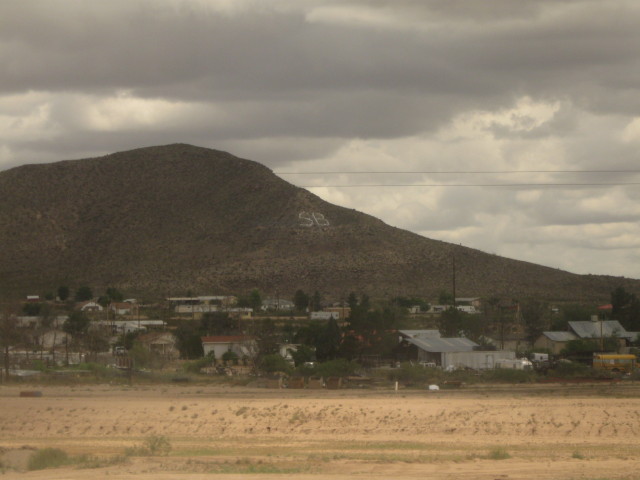
Sierra Blanca takes its name
from a mountain just northwest of town at 6894 ft. The town came
into existence when competing railroads for a second
transcontinental line came within ten miles of one another in
1881. Famous railroad magnate Jay Gould is said to have driven a
silver spike to commemorate the event, and the town sprang up
around the spot. Recent years have seen the rise of controversy
over a nearby sewage sludge dump composed of waste products from
New York City. Its population was 533 at the latest census.
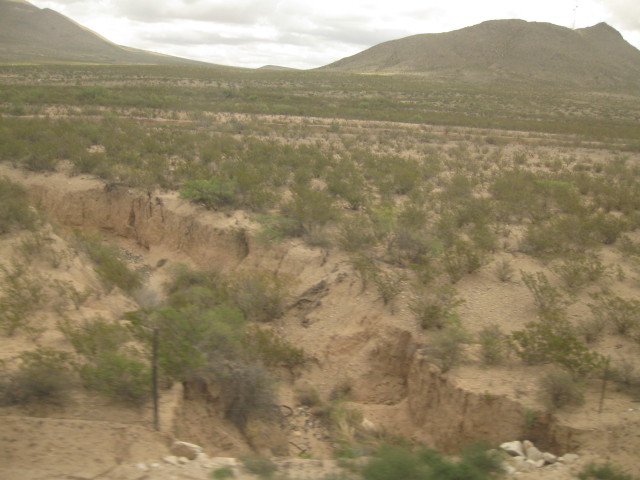
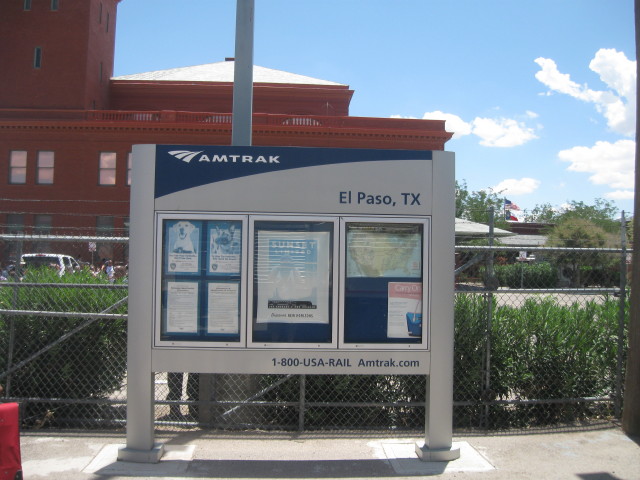
We arrived early in El Paso at 1:07pm, schedule 1:22pm and left on
time at 1:47pm.
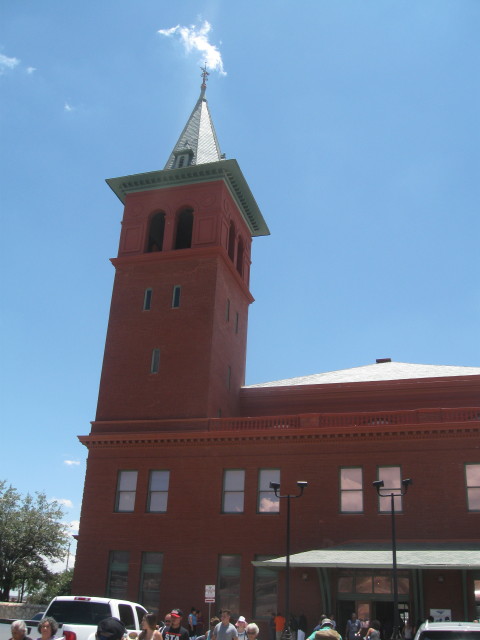
El Paso is situated along the
Rio Grande River across the border from Ciudad Juarez in Mexico.
Fort Bliss, a major U.S.Army installation and local employer,
lies to the east and northeast; the Franklin Mountains extend
into the city from the north and nearly divides it into two
sections. The area was not considered a part of Texas until 1848
when the Treaty of Guadalupe Hidalgo made settlements on the
north bank of the Rio Grande River American; the present
Texas-New Mexico boundary was drawn in the Compromise of 1850.
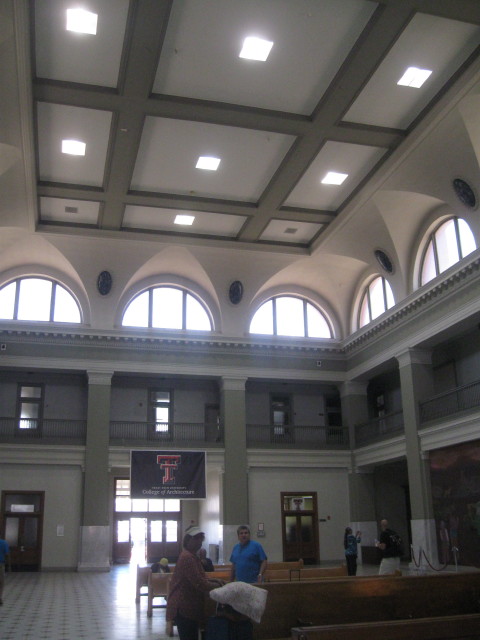
The population
exploded with the arrival of the Southern Pacific, Texas and
Pacific and the Atchison, Topeka and Santa Fe railroads in 1881.
By 1930, Conrad Hilton opened his first high-rise hotel here.
The popular drink "Margarita" was first mixed at Tommy's Place
Bar in 1945 in El Paso. The 24,00-acre Franklin Mountains State
Park is the largest urban park in the U.S. and resides entirely
within the city. Local attractions include Big Bend and Carlsbad
Cavers national parks. This handsomely restored train station
was designed by the same Chicago firm that built Washington
Union Station in Washington, D.C.
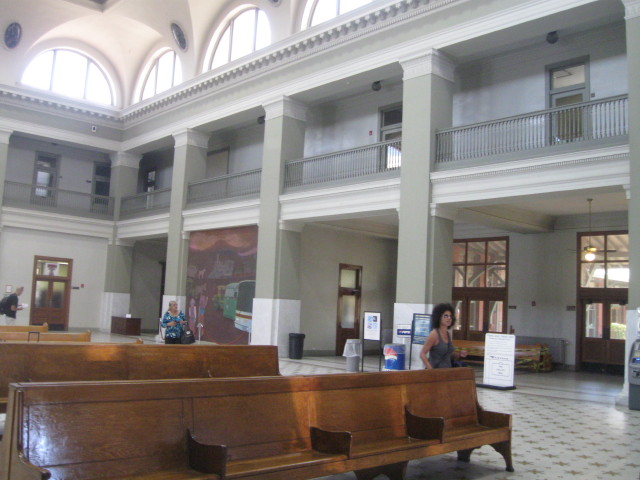
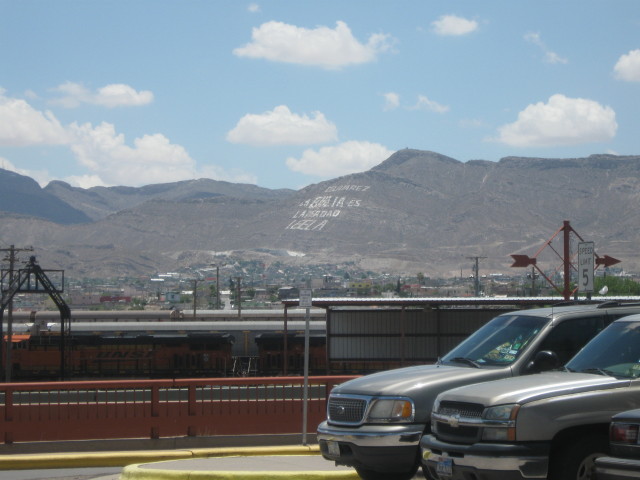
Looking out on Ciudad Juarez in Mexico.
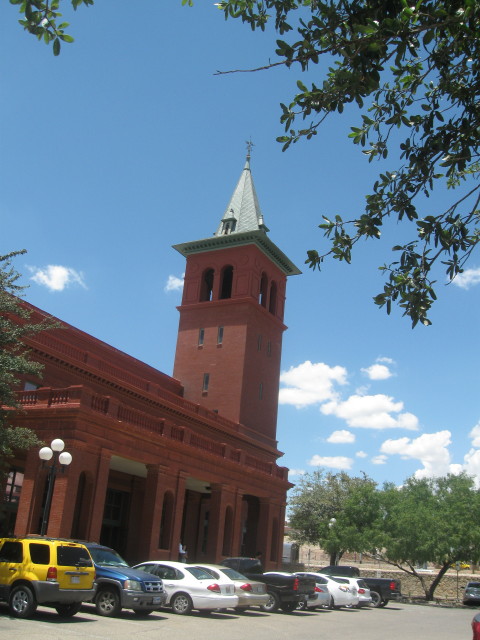
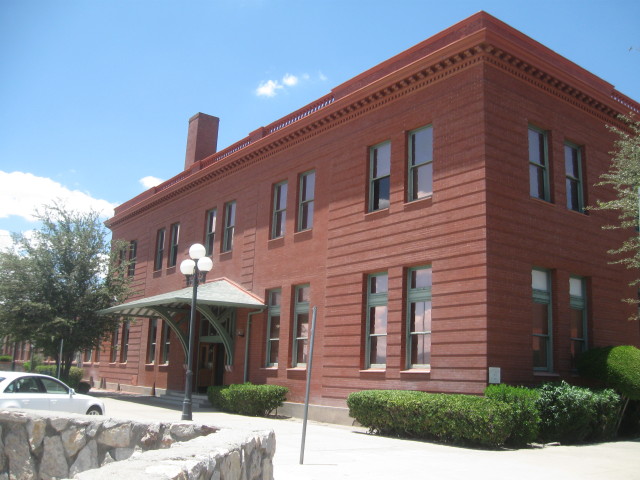
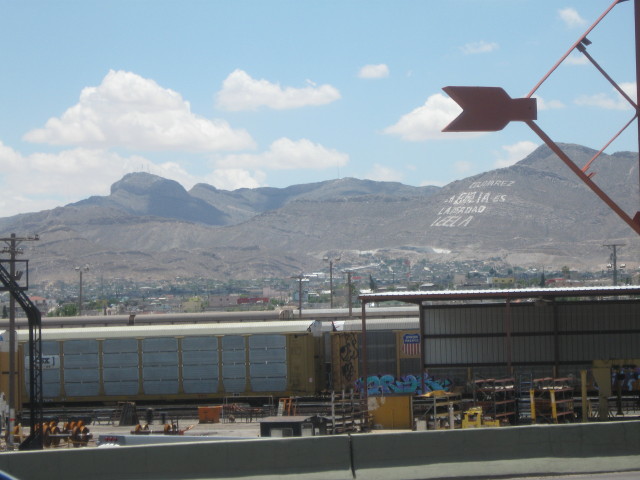
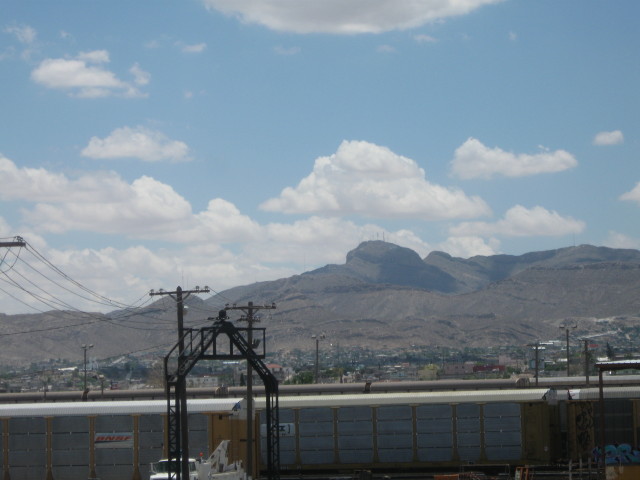
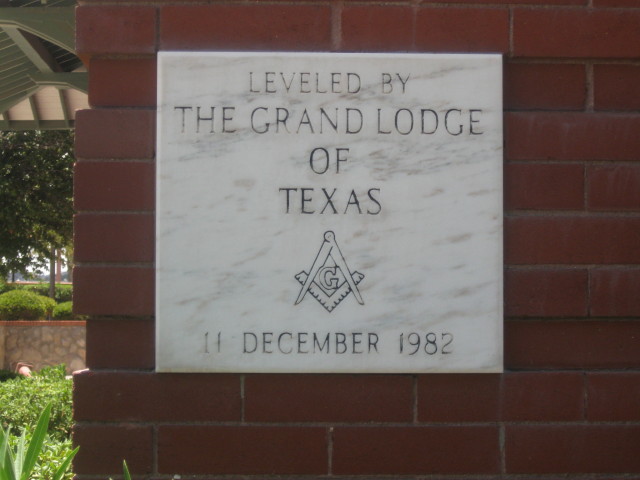
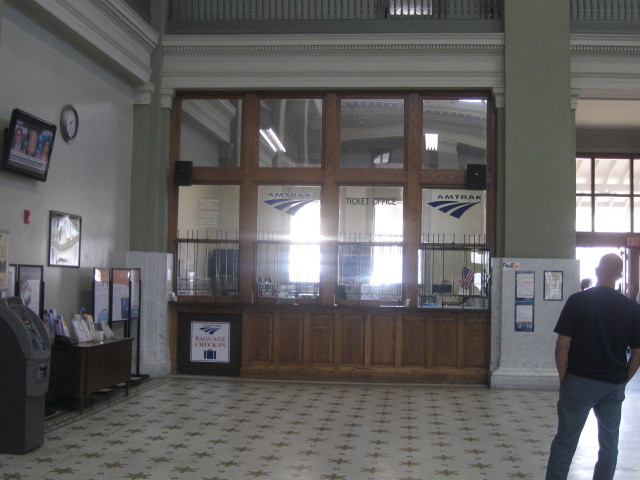
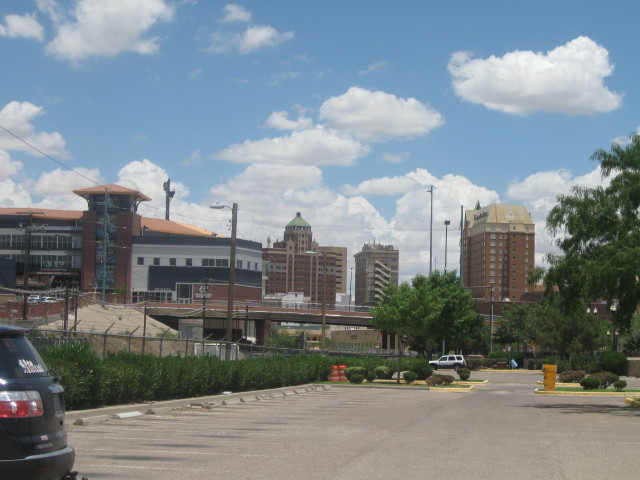
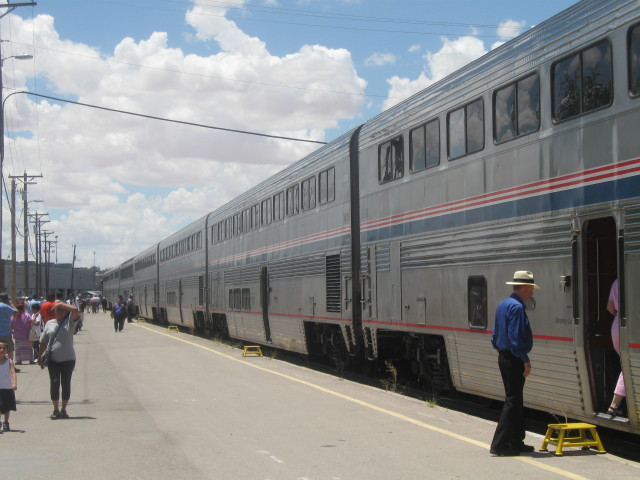
Boarding the
Sunset Limited in El Paso.
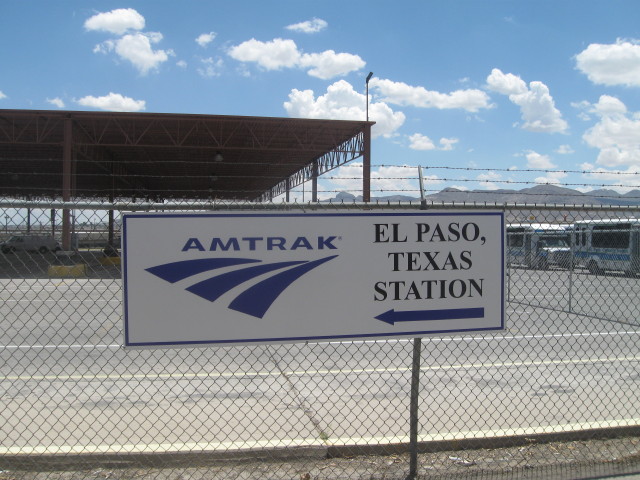
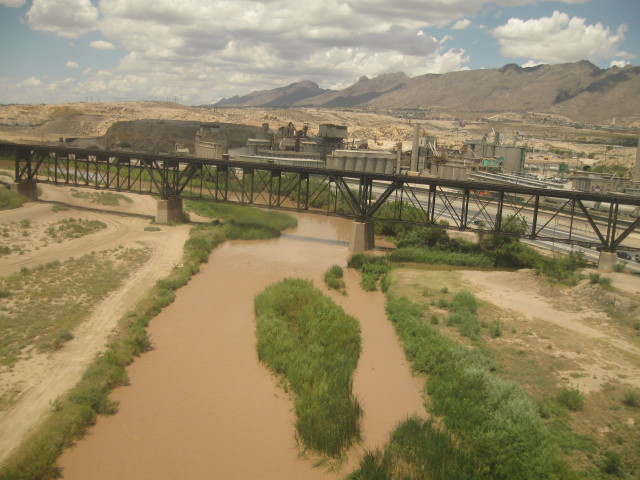
Crossing the Rio Grande River
that serves as a natural boundary for Texas and New Mexico.
Spanish for "Big River," the Rio Grande is 1,885 miles long,
fourth longest river system in the U.S.
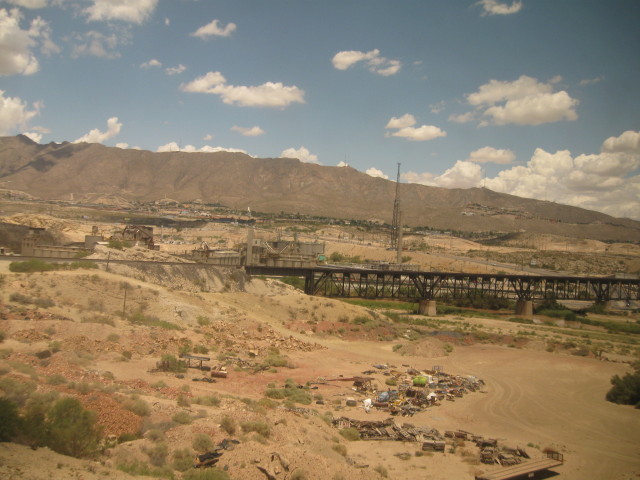
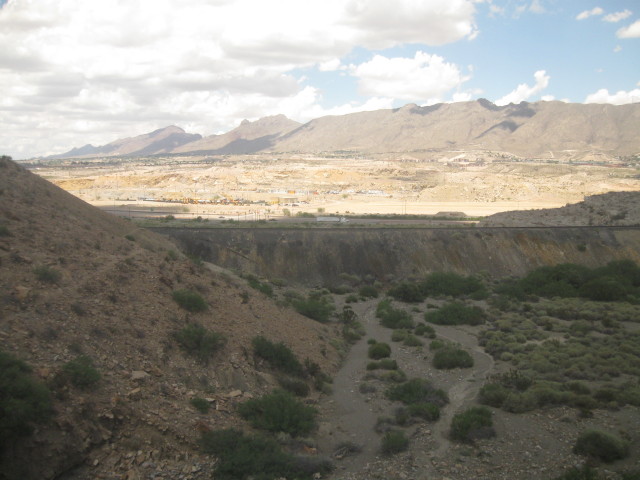
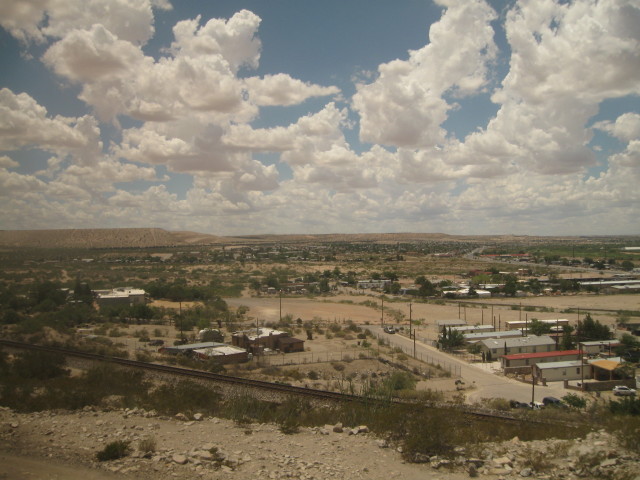
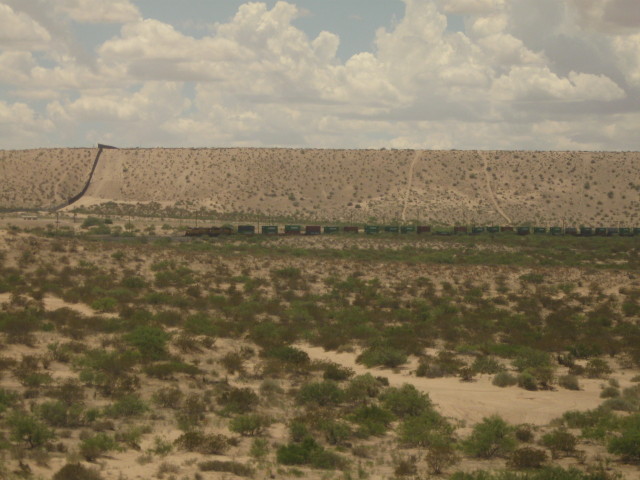
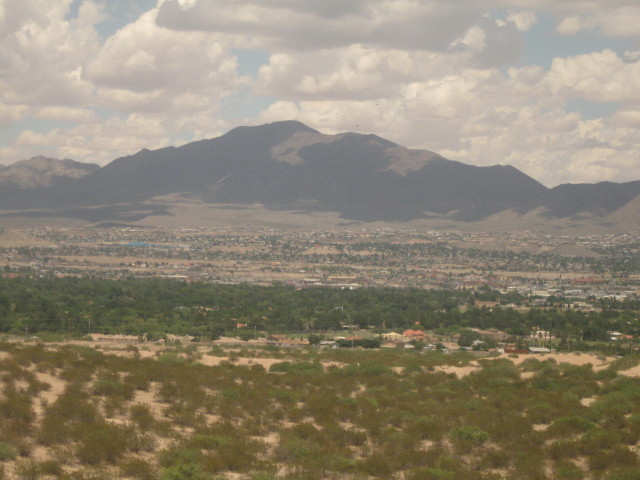
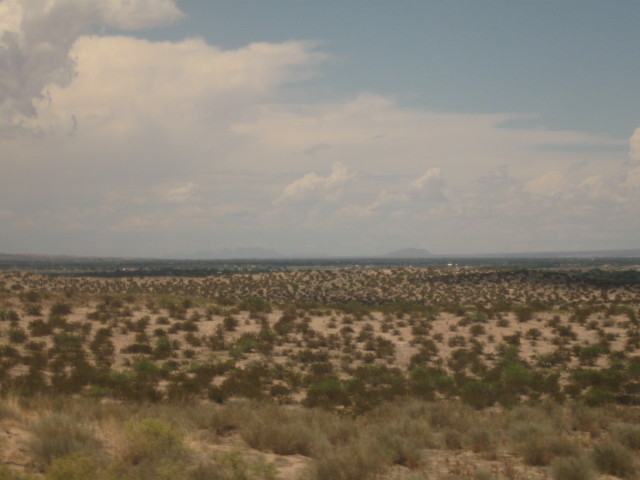
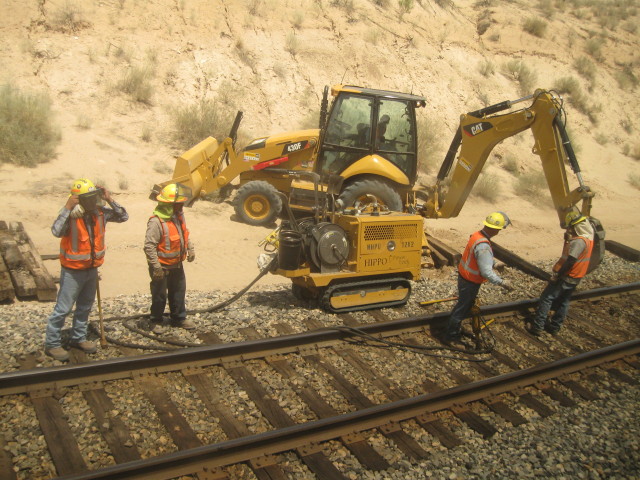
Maintenance of Way installing new ties on the Union Pacific
line.
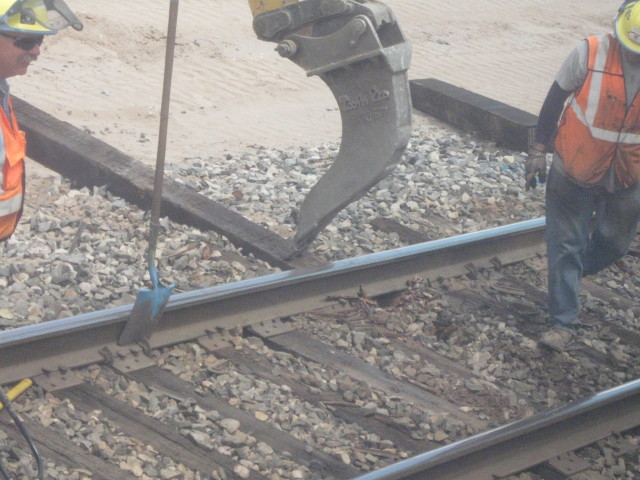
Scooting the new tie under the rail.
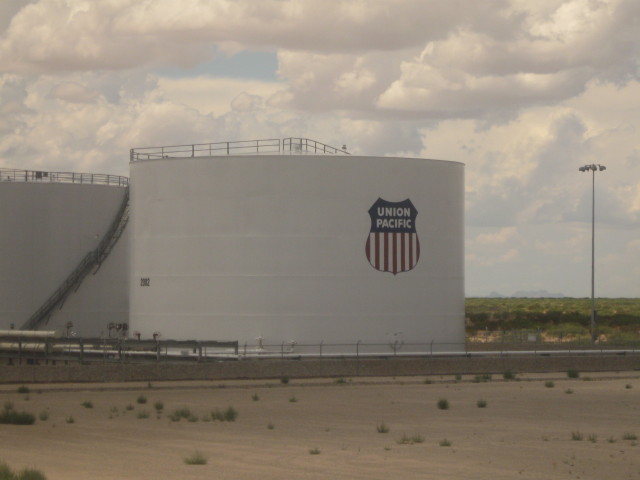
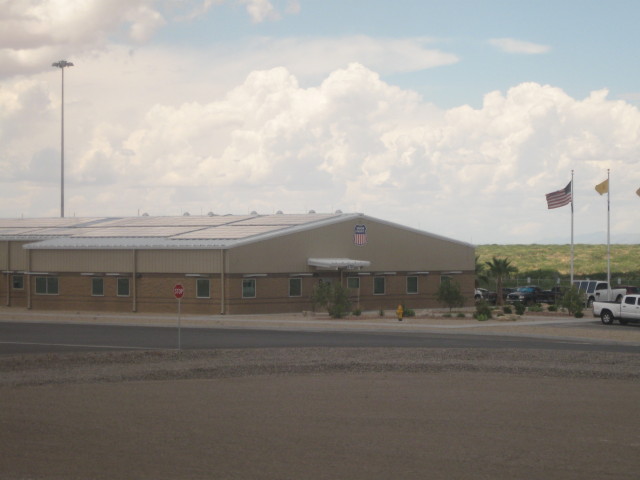
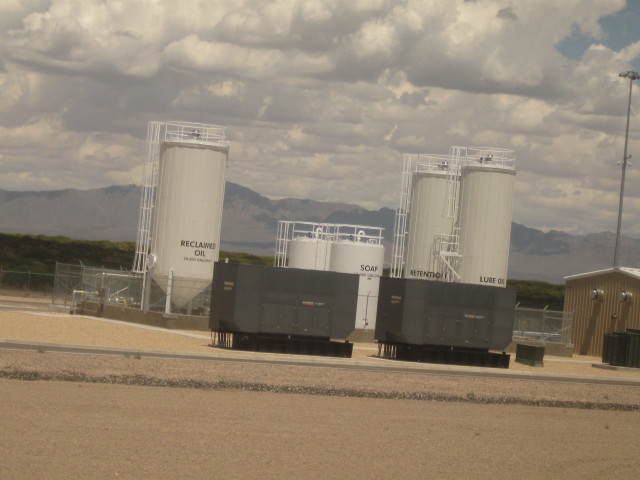
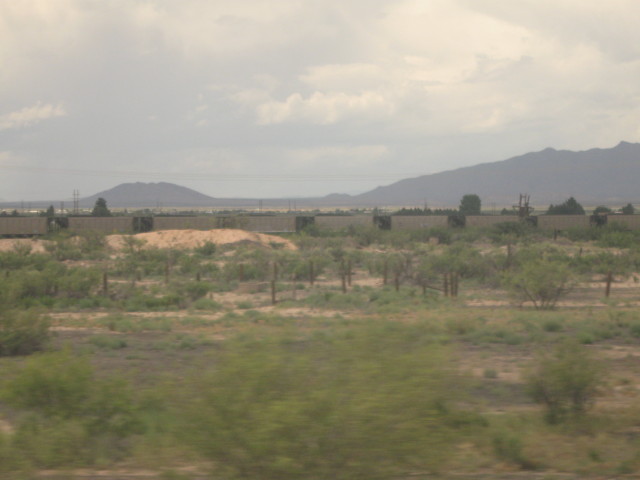
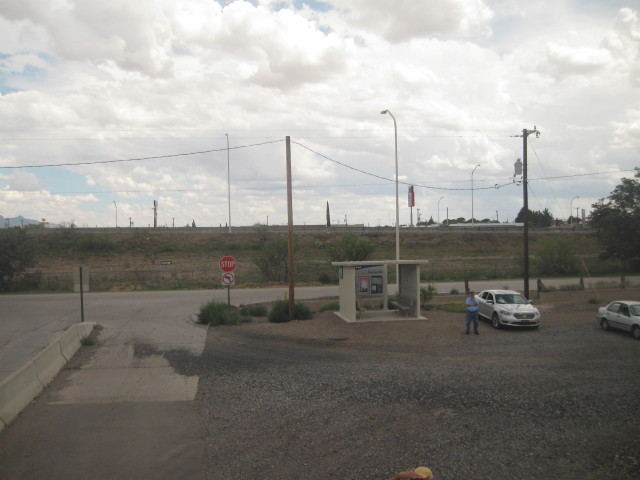
Deming, NM. Amshack. This is a flag stop.
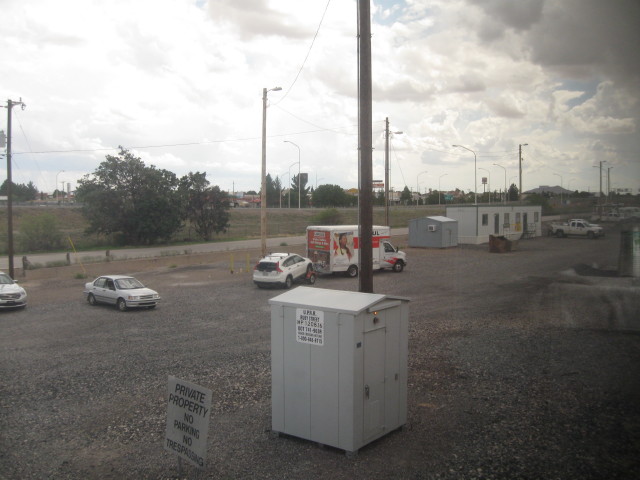
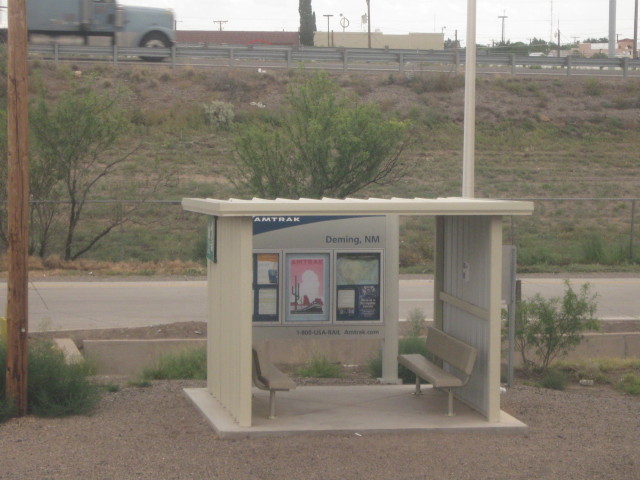
Deming was founded in 1881,
named after Mary Ann Deming Crocker, wife of Charles Crocker-
one of the so-called "Big Four" of the railroad industry in that
era. Here the Silver Spike was driven to commemorate the meeting
of the Southern Pacific and Atchison Topeka & Santa Fe
railroads, the second transcontinental railroad to be completed
in the U.S. To the southeast of Deming lies nearby Rockhound
State Park, established in 1966 as the first park in the U.S. to
allow collection of rocks and minerals for personal use.
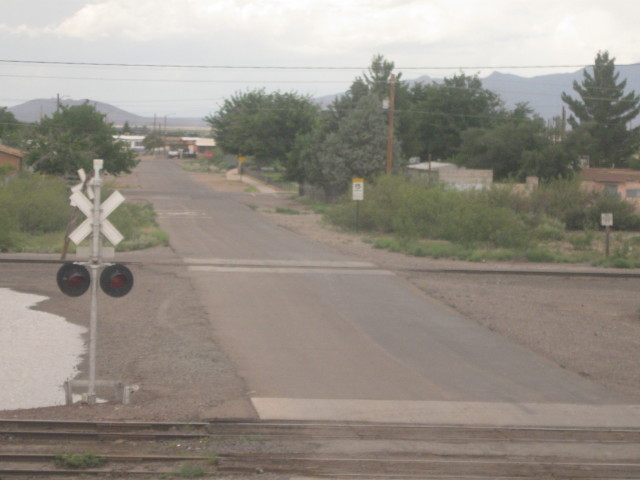
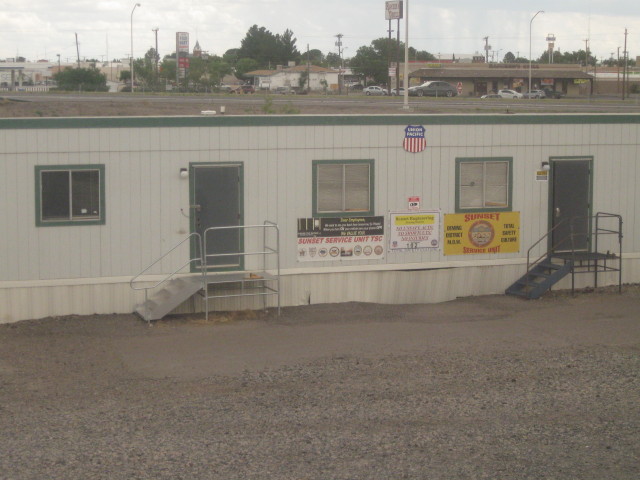
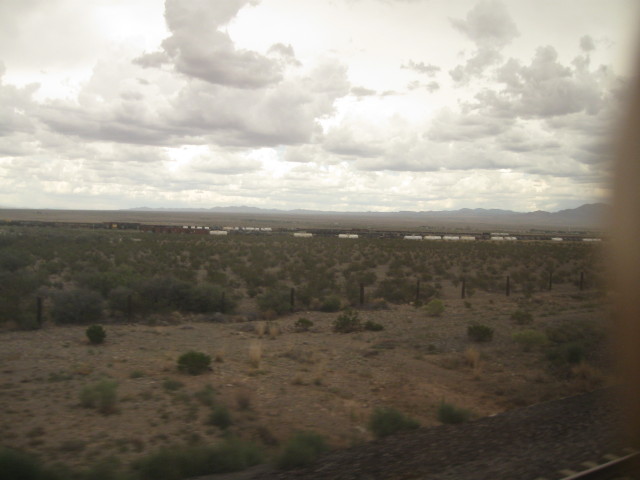
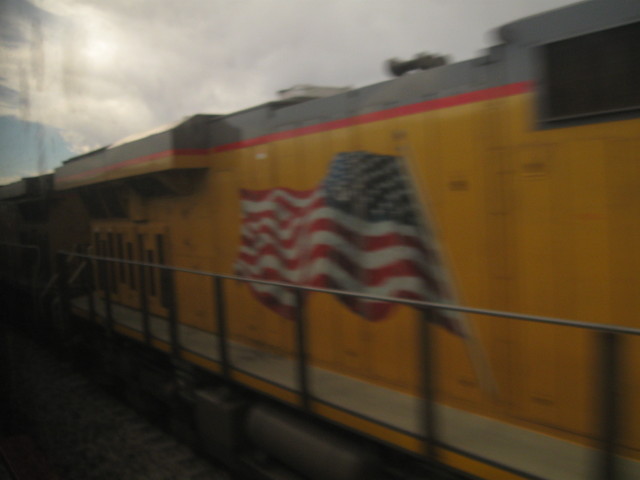
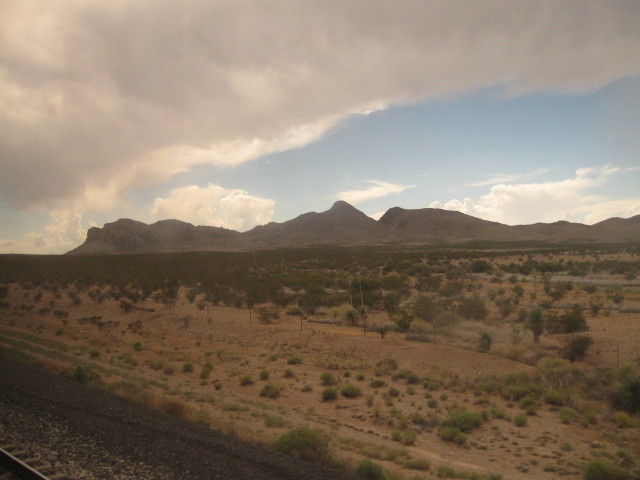
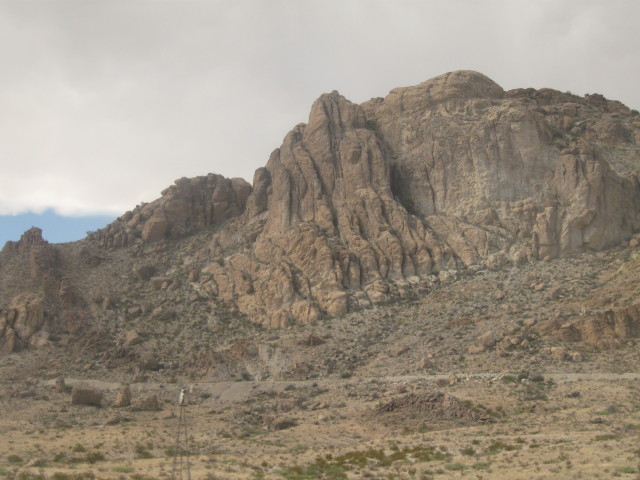
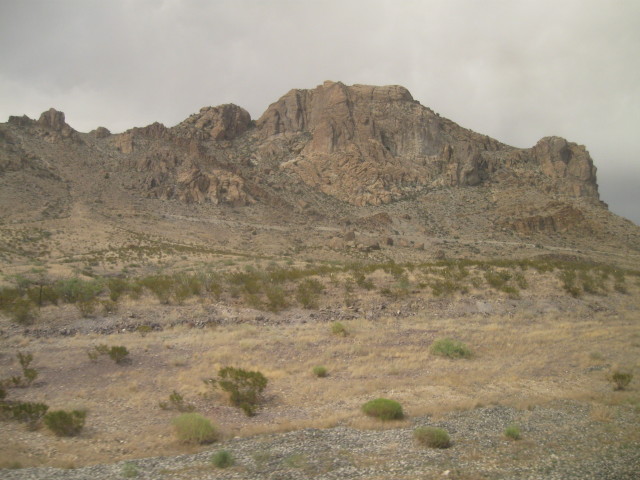
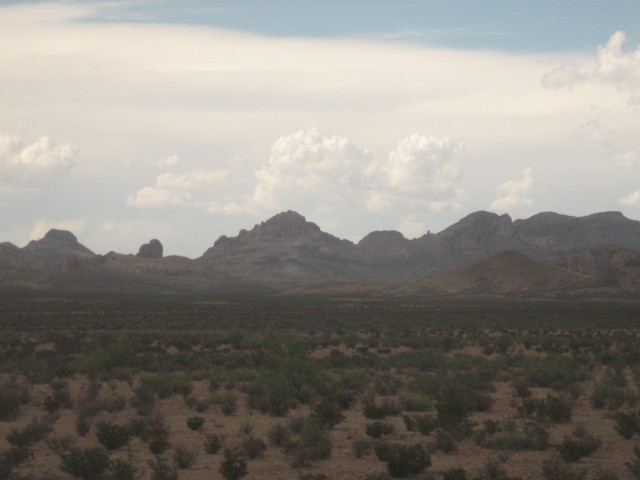
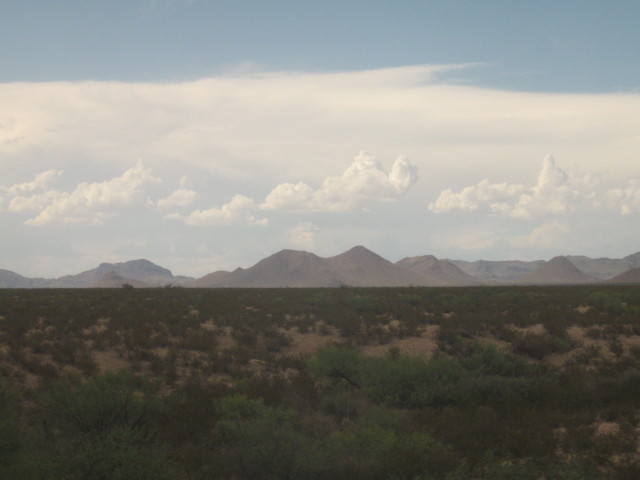
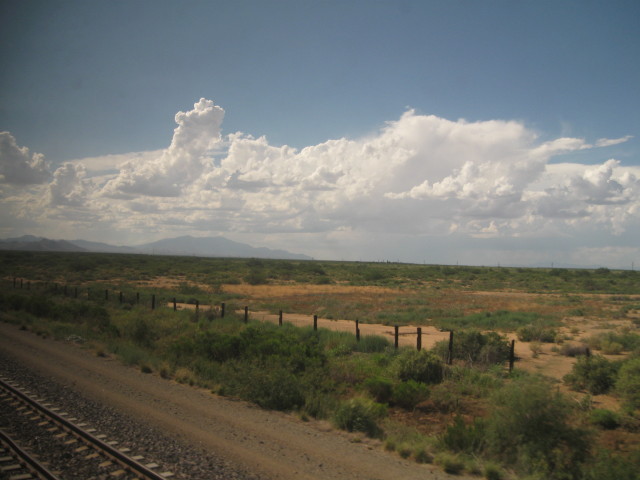
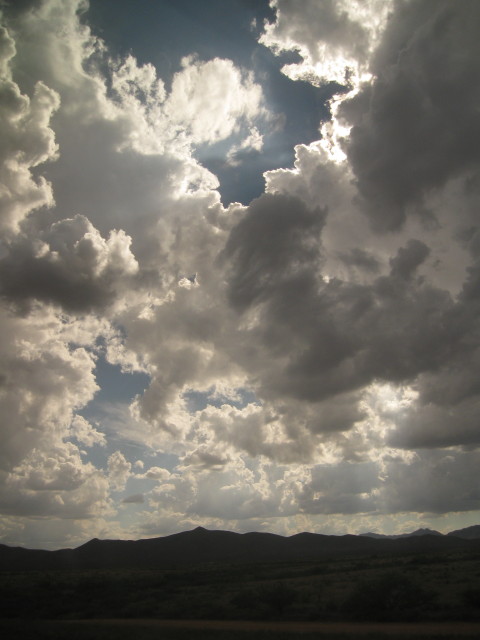
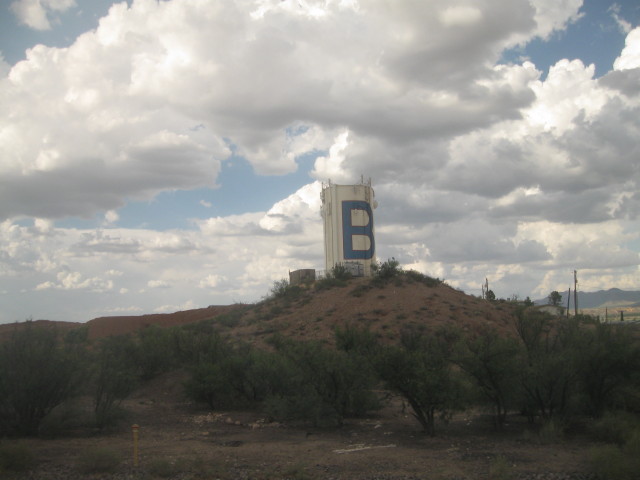
Benson, situated on the San
Pedro River, grew up in the early 1900s as the demand for copper
and silver increased, shipped in as they were for smelting and
distribution via the adjacent Southern (now Union) Pacific
Railroad main line. In the modern era, its moderate climate and
location as a gateway to Kartchner Caverns State Park have
resulted in its growing popularity as a retirement community and
tourist destination offering train trips and stagecoach rides.
Its culture is ingrained in the Old West and traditional
railroad heritage. The Benson Visitor Center -Train Depot is in
the heart of the historic district.
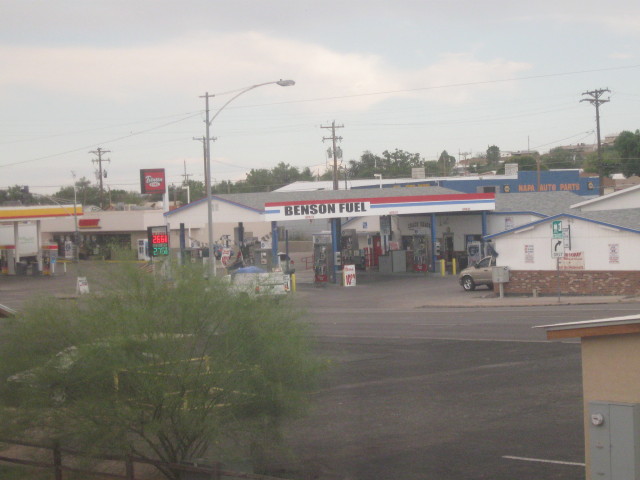
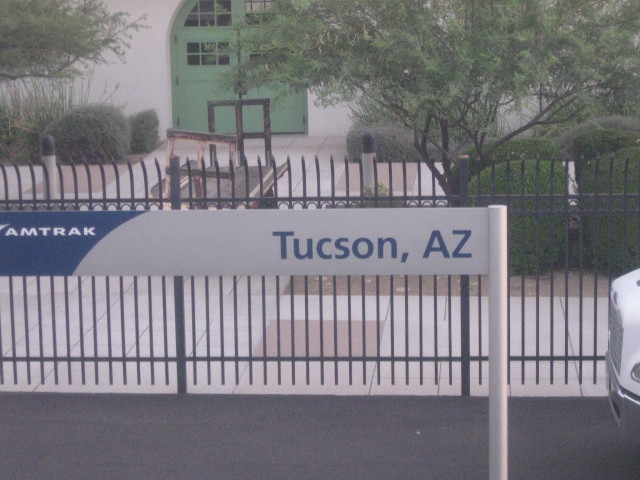
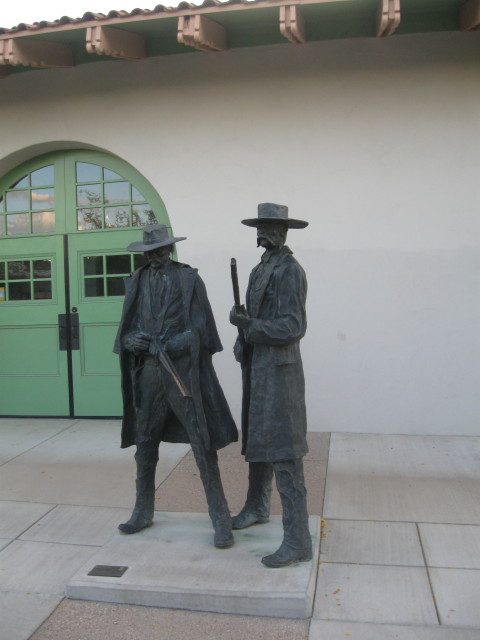
Tuscon was first inhabited
12,000 years ago by Paleo-Indians. Established as a Spanish fort
in 1775, it was original part of Mexico after it gained
independence from Spain in 1821. In 1853, it became part of the
U.S. after the Gadsden Purchase. Surrounded by five major
mountain ranges, it is the southernmost ski destination in the
country. The Tucson desert is home to the Saguaro National Park,
known for unique giant cacti that can reach a height of 50 feet.
The Old Tucson Movie Studio was a backdrop for some 300 of
Hollywood's greatest western movies.
While we were stopped in
Deming, I called my cousin in Tucson to let her know when we
were expected to arrive. Shirley said she would be at the
station and we could visit during my lay over. As I was getting
off the train, Shirley was walking onto the platform. We talked
and walked around the station area.
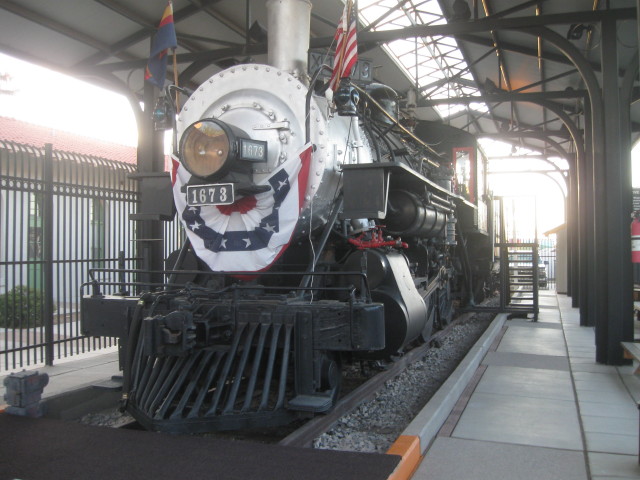
SP 1673, built by Schenectady Locomotive Works, November 1900,
2-6-0 Mogul.
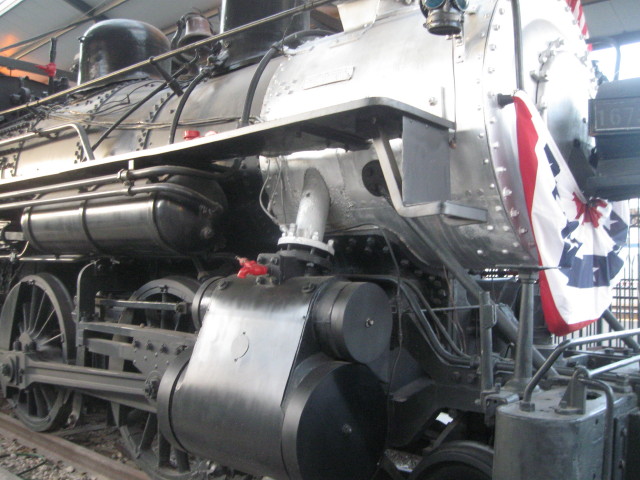
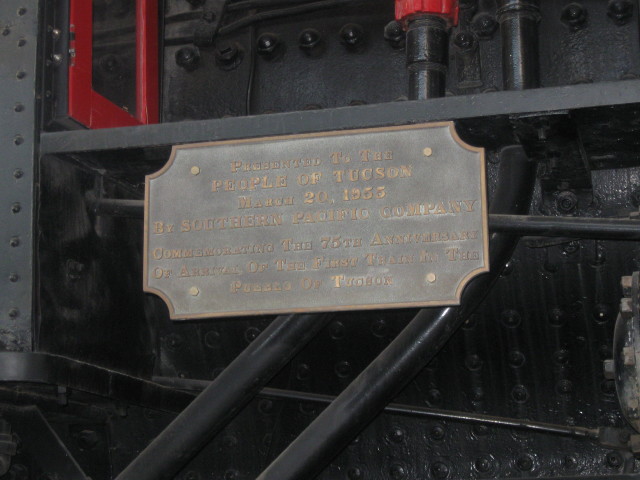
"Presented to the people of Tucson, March 20, 1955 by Southern
Pacific Company Commemorating the 75th Anniversary of arrival of
the first train in the Pueblo of Tucson."
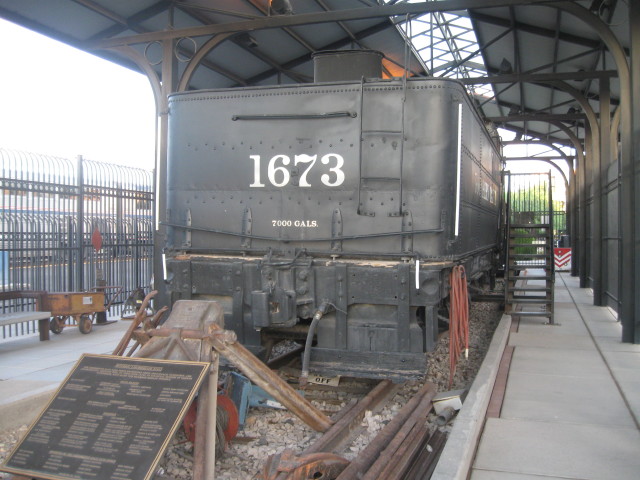
Fuel was coal then 1906, oil.
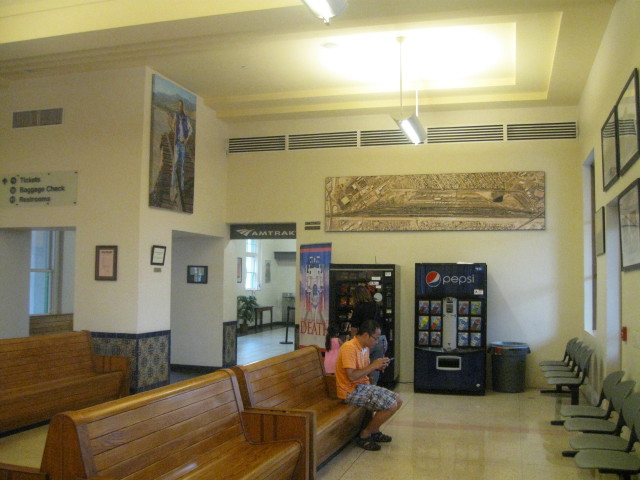
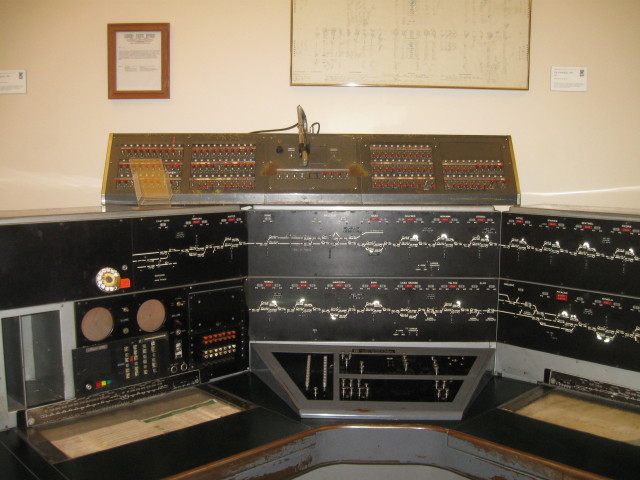
Bygone equipment on display in station waiting room.
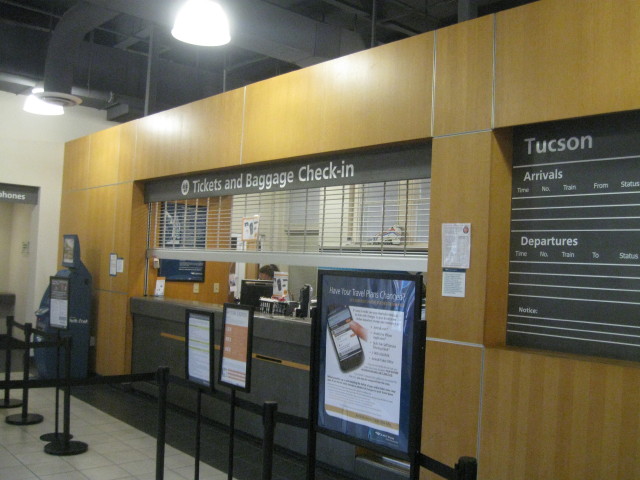
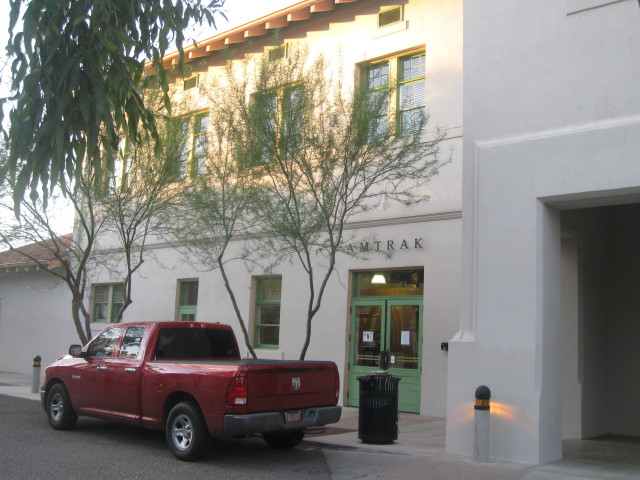
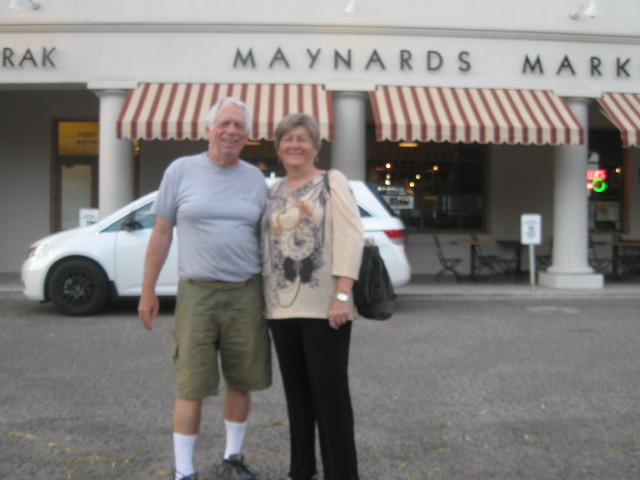
Robin and Shirley.
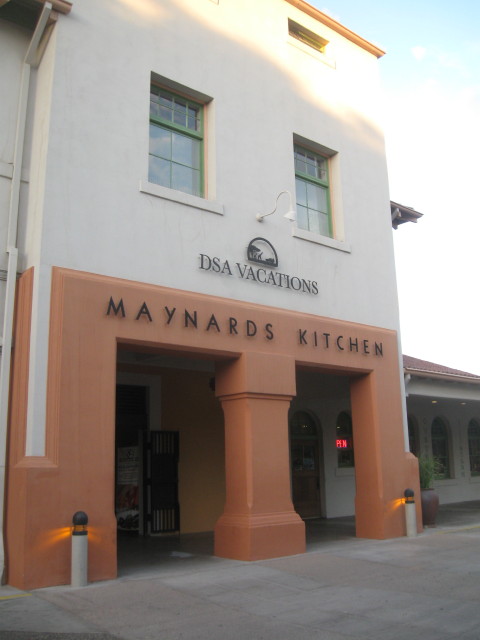
We talked and I told her
about my visit with our cousin Dawn in New Orleans and she
updated me about things in Tucson. Due to lack of time we were
unable to get a bite to eat as we had earlier thought.
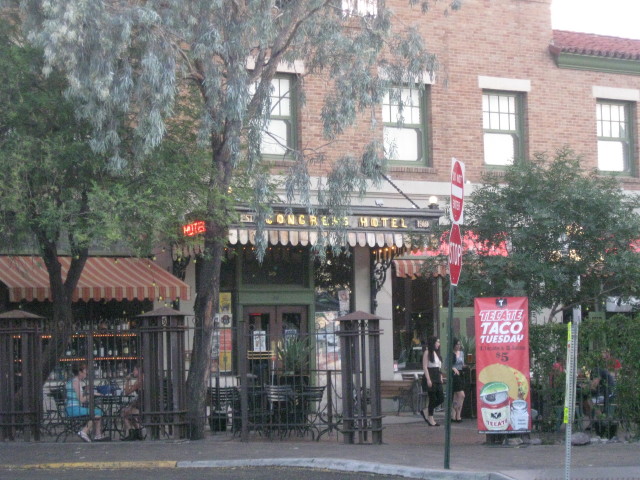
Across the street from the station.
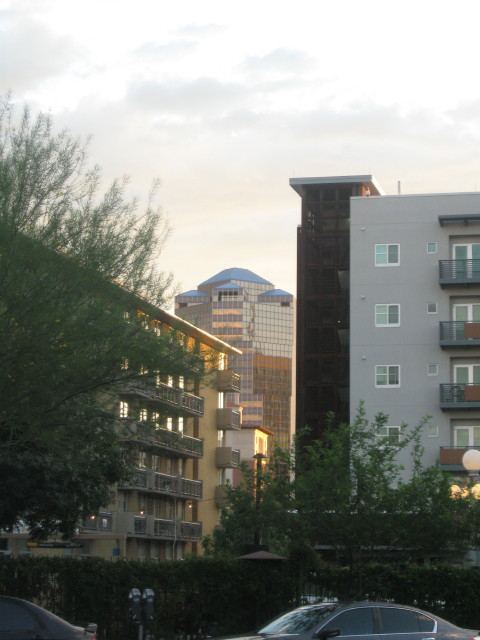
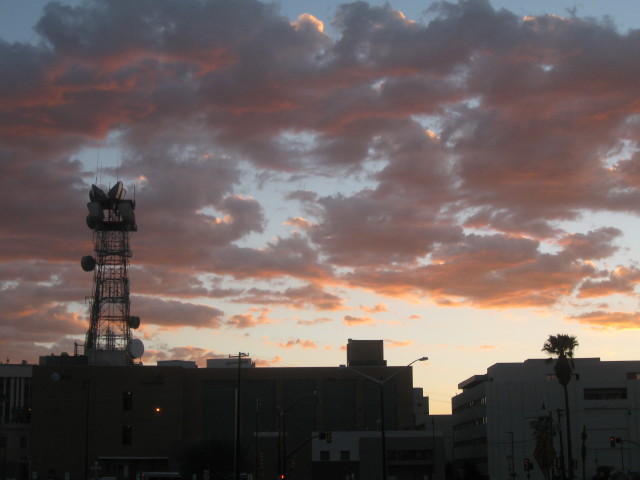
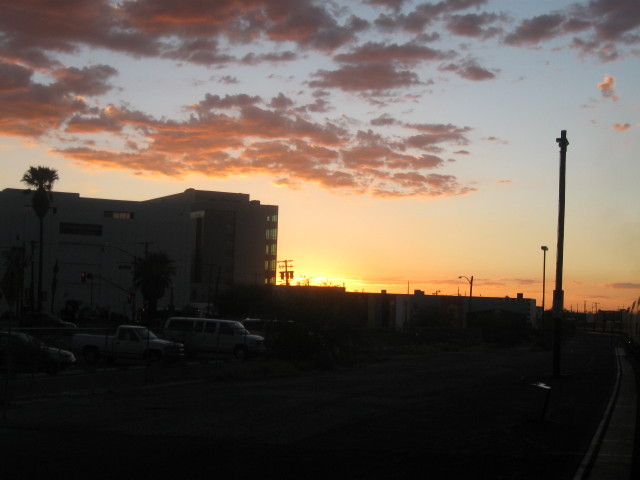
Sunset in Tucson.
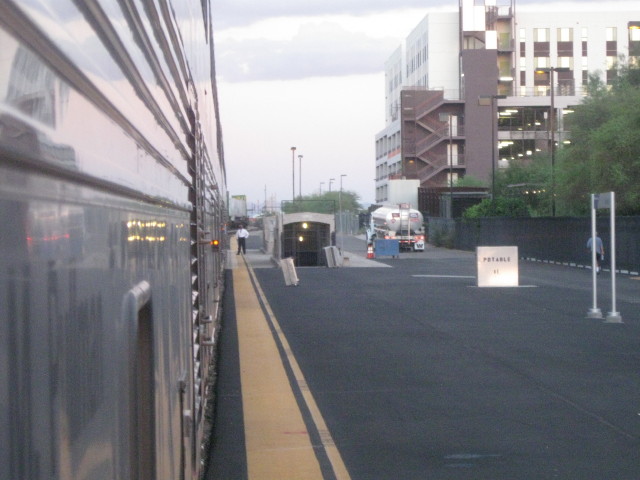
Soon it was time to leave and we departed on time at 7:35pm.
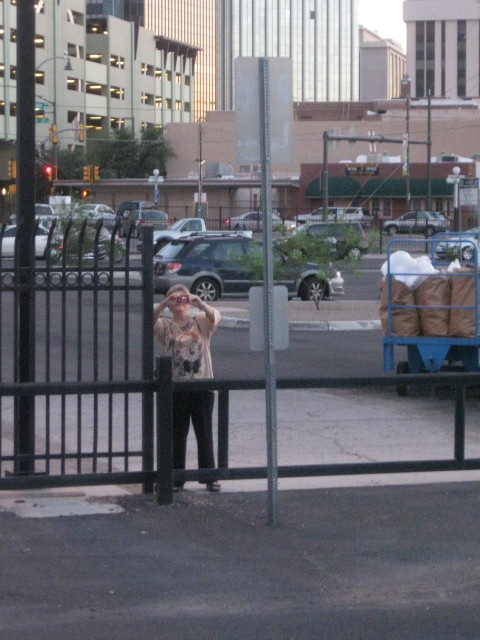
Taking goodbye pictures of each other.
After leaving Tucson, it was
time to make the bed up for tonight. Again the wall and the top
bunk were in a standoff. Again attendant Yvone found her heavy
duty crowbar, did battle with the wall, then it backed away and
let the top bunk drop.
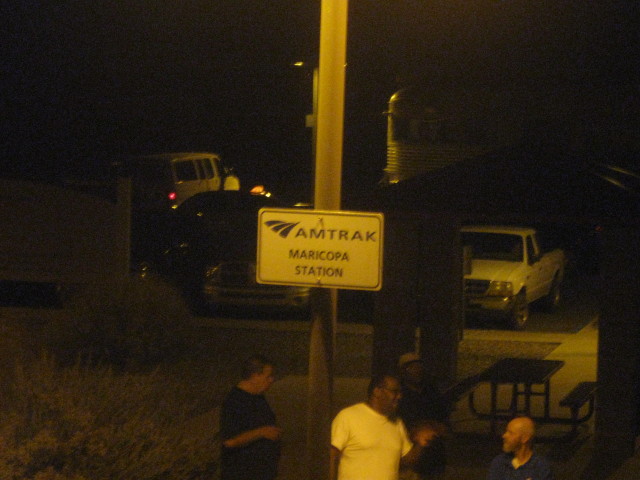
We stopped in Maricopa from 8:55pm to 9:10pm running a few minutes
late.
Maricopa is home to the Koli
Equestrian Center, offering horseback riding trails on the Gila
River Indian Reservation. The station here features a former
converted California Zephyr dome observation lounge car. The
town has had three incarnations; one as a stagecoach relay and
trading center, one as a railroad junction and a third as a fast
growing business location.
After leaving Maricopa, I
slid between the sheets and laid my head on the pillow. Yuma,
Palm Springs, Ontario, Pomona were passed through without notice
and without disturbing my slumber on the rails. I awoke after we
had arrived home in Los Angeles from all the commotion in the
corridor. We arrived in Los Angeles at 4:30
am, about an hour early. Some of the
passengers were out on the platform as soon as the wheels
stopped, others were taking their time as we were told there was
no rush as the train would be sitting at the station for several
hours. I gathered my belongs and left them in my room as I went
and asked Yvonne if it was OK to leave them in the room while I
went down to the tunnel to find a Metrolink ticket machine at
far ends of station. Knowing where they were located, I quickly
bought my Metro ticket and returned to the train and pickup my
luggage. Saying goodbye to my great attendant, Yvonne I walked
to the end of the platform and then a short walk passing two
platforms to the Metrolink train platform and waited for train
682 to take me to Orange County. Chris told me to leave the bags
on the train and get the Metrolink without taking the bags down
the tunnel and back. It was a good tip, Chris. We departed Los
Angeles on time at 6:45
and arriving in Buena Park at 7:19
am. From there I took the Beach Blvd bus home.
Just as I was stepping off the train, my bus made a quick
getaway so there was a wait the next one. I used my Metrolink
ticket for the bus fare. Metrolink tickets are honored on most
city bus systems in Southern California. The bus ride was slow
but I was happy to see familiar things. After my stop I only had
to walk the short block home. It took several days to get rested
and acclimated to being at home again.
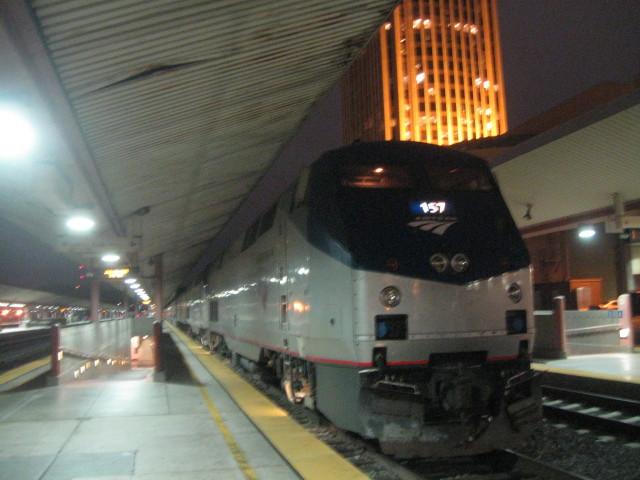
The Sunset Limited at rest in Los Angeles after 1,995 miles
traveled from New Orleans.
In the 28 days since Chris
and I left home, we covered over 8.5 thousand miles by air,
auto, train and boat and what an adventure is was that produced
many great memories. And thanks to all our readers who have
followed our adventurers at the National Railroad Historical
Society 2015 convention in Vermont. Check back soon for more of
Chris and I adventures in the Rockies and at the NRHS convention
in Denver.